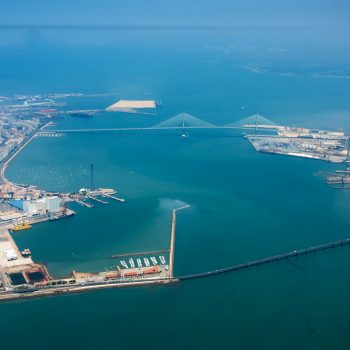
The Port of Cadiz is promoted in Fitur as a destination for cruises and mega yachts
The impact of this sector on the environment reached 19 million euros in 2019
The Port Authority of the Bay of Cadiz (APBC) is present at the International Tourism Fair, FITUR, which is being held from yesterday until next Sunday in Madrid.
The port of Cadiz is participating in the stand shared by Puertos del Estado, Aena and Renfe and will take advantage of its presence at this important event to continue promoting Cadiz as a cruise tourism destination and to reinforce the strategy – undertaken at the German Boot Düsseldorf fair this week – of promoting the generation of new market niches in the traffic and repair of mega-yachts.
As it is known, the Port of Cadiz Bay is a reference in cruise traffic at a national level, where it occupies the 5th place in stopovers and the 6th in passengers, having broken a new record in 2019 with 477,392 passengers.
In spite of this figure, practically one in three days there were no cruise calls in Cadiz in 2019 and, the forecasts for 2020 indicate that this year there will be practically half of the days without a cruise, 115 days with only one ship, 57 days with 2 cruises, 20 days with 3 ships and 5 days with 4 transatlantic ships.
With this level of activity, the Port Authority of the Bay of Cadiz considers that there is still room to grow without saturating the city, in a sustainable way and assimilated by the environment.
In this sense, it is worth remembering the important economic impact that the cruises leave on the environment and that, according to the last study carried out by the Andalusian Government on cruise tourism in the region, the average expenditure per cruiser and day in port of call is established at 40.6 euros, so the annual impact would amount to 19 million euros, to which the crew would have to be added.
In the case of the base port, the expenditure amounts to 200 euros, hence the interest of both the Port Authority of the Bay of Cadiz (APBC) and the sector in advancing this objective.
Another important contribution of the cruise sector from the economic and social point of view is the cruise ship repair activity carried out by Navantia, which not only has an impact on the generation of direct and indirect jobs in the factory and auxiliary industry, but also in the catering and commerce sector in Cadiz, which serves the crew and workers who live in the city while the repair work is being carried out.
According to data provided by Navantia Cádiz, in 2019 they repaired 13 cruise ships, with an average stay of 3 weeks. Each cruise ship generated an average of 1,000 workers from Navantia (between Navantia and the auxiliary industry), to which must be added an average of 800 crew members and between 1,000 and 1,500 workers per ship




